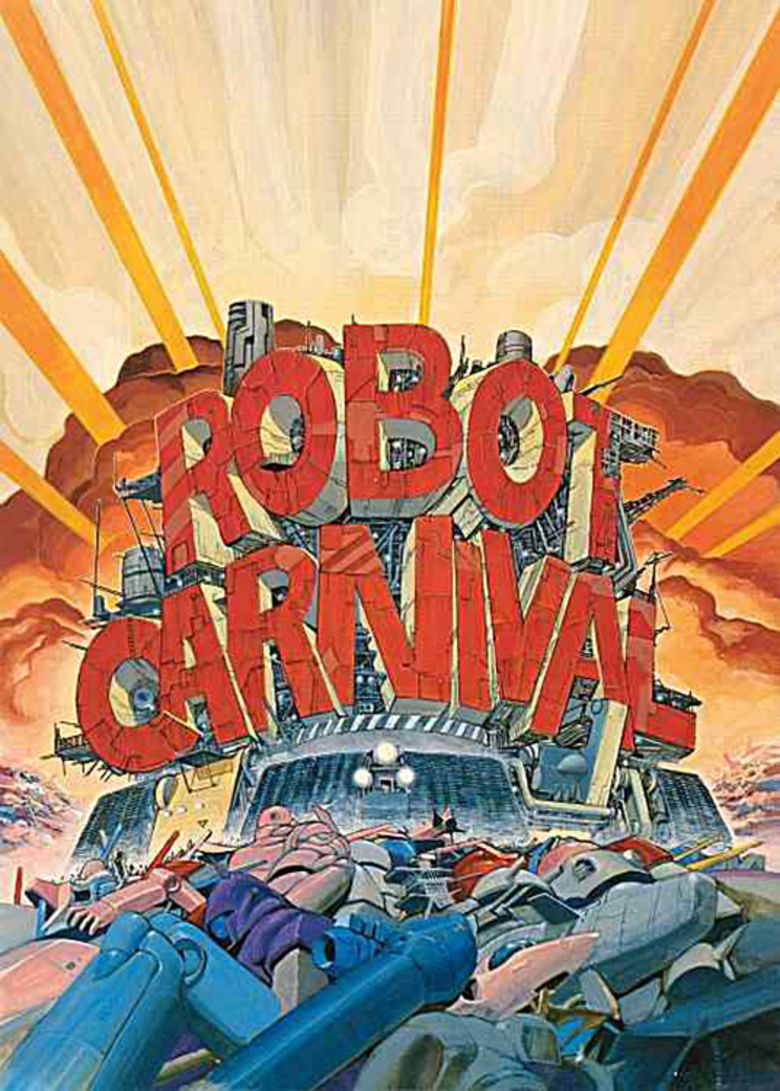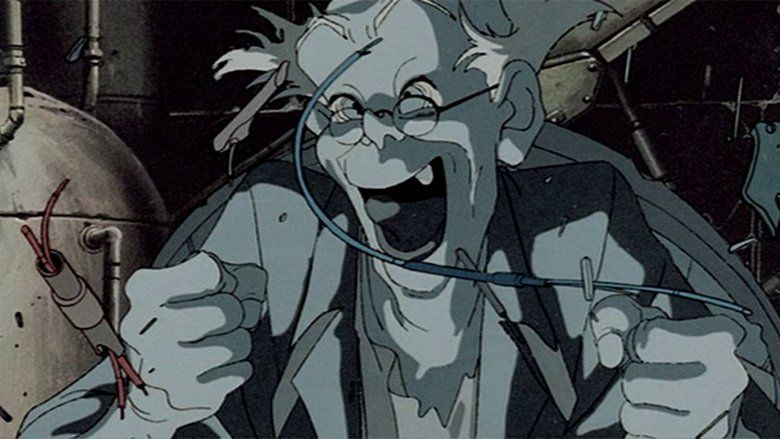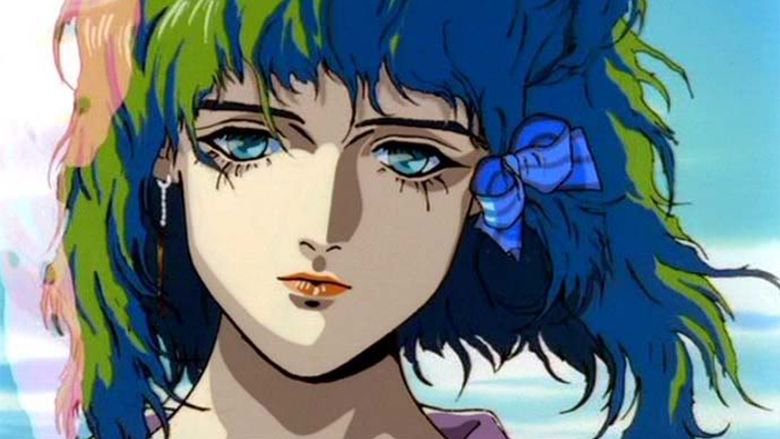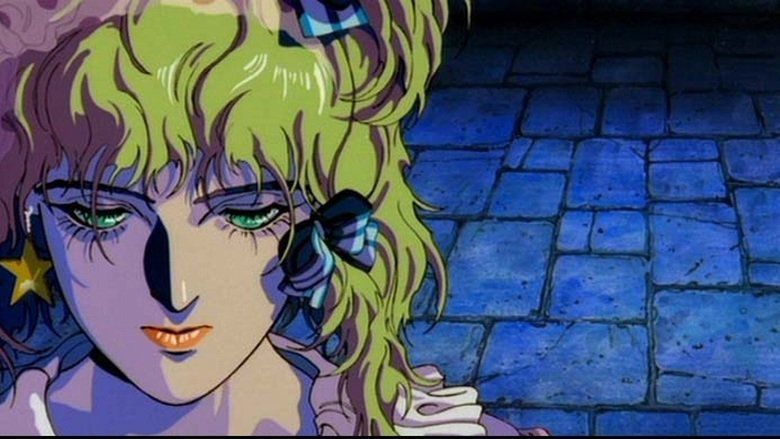Robot Carnival
7.2 /10 1 Votes
Country Japan | 7.2/10 IMDb Genre Animation, Comedy, Drama Duration Language Japanese | |||||||||||||||||||||||||||||||||
 | ||||||||||||||||||||||||||||||||||
Director Atsuko FukushimaKatsuhiro OtomoKoji MorimotoHidetoshi OmoriYasuomi UmetsuHiroyuki KitazumeMao LamdoHiroyuki KitakuboTakashi Nakamura Release date July 21, 1987 (1987-07-21) (Japan) Writer Hiroyuki Kitakubo (scenario), Hiroyuki Kitazume (scenario), Koji Morimoto (scenario), Takashi Nakamura (scenario), Yasuomi Umetsu (scenario), Tom Wyner (dialogue: english version), Manabu Ohashi (scenario), Hidetoshi Omori (scenario), Katsuhiro Otomo (scenario) Cast Kôji Moritsugu (Main Character (segment "Presence")), Yayoi Maki (Girl (segment "Presence")), (Grandma (segment "Presence")), (Daughter, voice of Small Robot (segment "Presence")), Aya Murata (Daughter (child) (segment "Presence")), Nariko Fujieda (Grandchild (segment "Presence"))Similar movies Godzilla vs. Mechagodzilla II , Robot Jox , Westworld , Neon Genesis Evangelion: Death and Rebirth , Robot , Futureworld | ||||||||||||||||||||||||||||||||||
Robot carnival trailer
Robot Carnival (ロボット・カーニバル, Robotto Kānibaru) is a Japanese anthology original video animation (OVA) released in 1987 by A.P.P.P.. In North America, it was released in theaters by Streamline Pictures with the order of the segments slightly rearranged. This OVA has gained a small cult following.
Contents
- Robot carnival trailer
- Robot carnival a tale of two robots pt 1 2
- Opening Ending
- Frankens Gears
- Deprive
- Presence
- Starlight Angel
- Cloud
- Strange Tales of Meiji Machine Culture Westerners Invasion
- Chicken Man and Red Neck
- Release
- Streamline Pictures English dub
- References

It consists of nine shorts by different well-known directors, many of whom started out as animators with little to no directing experience. Each has a distinctive animation style and story ranging from comedic to dramatic storylines. The music for all of the segments was composed by Joe Hisaishi.

Robot carnival a tale of two robots pt 1 2
Opening / Ending

The "Opening" (オープニング, Ōpuningu) takes place in a desert. A boy finds a small "coming soon" poster advertising the Robot Carnival, and becomes frightened and agitated. He warns the people in his village, most likely to escape, when a huge machine with many robots performing in niches on its exterior grinds its way right over the village. Once a magnificent traveling showcase, it is now a decayed, rusted, malfunctioning, engine of destruction.
In the "Ending" (エンディング, Endingu) segment (the ninth segment of the OVA), the Robot Carnival is stopped by a dune in the desert. Unable to climb the sandy obstruction, the Carnival stalls at its base. As the sun sets over the traveling relic, flashback stills recall the grandeur of the Carnival at the peak of its existence—an unparalleled engine of mirth that brought timeless joy to the various cities it visited. At sunrise, we see the platform chug forward with a sudden burst of power and crest over the dune in its way. The final push proves to be too much for the aged contraption, and it finally goes to pieces in the desert. The bulk of the OVA's credits are then shown concluding with an epilogue.
In the epilogue at the end of the credits, set years later, a man discovers an orb among the remains and brings it back to his family. It is a music box featuring a miniature robot ballerina. As it dances, the children applaud. The ballerina finishes its dance with a leap into the air and explodes, blowing up the shack where the family lived, leaving "END" in enormous letters lying in its place as the only survivor, the family's pet llama, struggles to regain his footing.
Franken's Gears
"Franken's Gears" (フランケンの歯車, Furanken no Haguruma) was directed by Kōji Morimoto. A mad scientist tries to give life to his robot with lightning, just like Frankenstein. When it comes to life, the robot copies everything the scientist does. Overjoyed, the scientist dances with glee, trips, and falls. Seeing this, the robot dances, trips, and falls on the scientist, killing him.
Deprive
In "Deprive", an alien invasion of robot foot soldiers attacks a city and kidnaps people, including a young girl. Her companion, an android, is damaged, but retains her locket. A human with superhuman abilities is then seen who goes through waves of robots before being stopped by two powerful robots. Captured by the alien leader he is tortured, but it is also revealed to be the android from earlier, now upgraded into a combat android with a human disguise. Defeating the two powerful robots and the alien leader, he rescues the girl. Running through the wasteland carrying her, the girl eventually wakes up and recognizes his new form because of the locket he still has.
Presence
"Presence" (プレゼンス, Purezensu), one of only two segments featuring intelligible dialogue, tells the story of a man who has an obsession with a robot girl he has been secretly constructing in an attempt to compensate for the lack of any close relationship with his wife and family. The setting seems to be British and of the early twentieth century, but also suggests another planet or a future which has attempted to re-establish a former social structure. When the robot takes on a personality of her own, far beyond what the man had programmed, he smashes her in a fit of panic, and leaves his secret laboratory for what he believes is the last time. Twenty years later, the man has a vision of his robot appearing before him, but then blowing up before he can take her hand. He returns to his shed to find the robot still sitting smashed in a corner, just as she had been left years earlier. Another twenty years elapse, and the robot appears again before the man. This time, he takes her hand and walks into the distance with her, before vanishing in front of his shocked wife.
Little of the dialogue is actually spoken on-screen - all but a few lines are given in voice-over, or with the speaker's mouth obscured.
Starlight Angel
"Starlight Angel" is a bishōjo story featuring two friends—teenage girls—at a robot-themed amusement park. One of the girls finds that her boyfriend is now going out with her friend. Running away in tears, she finds her way to a virtual reality ride. Though pleasant at first, her memory causes the ride to summon a giant laser-breathing mecha. One of the park's robots finds himself in the role of knight in shining armor, allowing her to let go of her darker emotions, and to move forward in her life. The visual style of this segment was heavily influenced by the music video for A-ha's "Take on Me."
Cloud
"Cloud" features a robot walking through time, and the evolution of man. The backdrop is animated with clouds that depict various events of the universe, such as the modernization of man as well as the self-destruction of man. Eventually the same angel who cries for his immortality makes him human towards the end. The animation is done in a scratchboard or rough etching style.
Strange Tales of Meiji Machine Culture: Westerner's Invasion
"Strange Tales of Meiji Machine Culture: Westerner's Invasion" (明治からくり文明奇譚〜紅毛人襲来之巻〜, Meiji Karakuri Bunmei Kitan: Kōmōjin Shūrai no Maki, retitled "A Tale of Two Robots, Chapter 3: Foreign Invasion" for the Streamline dub) is set in the nineteenth century and features two "giant robots" directed from within by a human crew. In the style of a movie serial of the sound era, a Westerner in his giant robot attempts to take over Japan, but is challenged by locals operating a "machine made for the parade"—a Japanese giant robot. The style of this segment is somewhat reminiscent of a Japanese World War II-era propaganda film. Despite the title of this segment, there is no known prequel or sequel. The Westerner speaks English in the original release.
Chicken Man and Red Neck
"Chicken Man and Red Neck" (ニワトリ男と赤い首, Niwatori Otoko to Akaikubi, retitled "Nightmare" for the Streamline dub) is set in the city of Tokyo as it is overrun by its machines. They all come alive for a night of revelry, with only a single, drunken human (Chicken Man) awake to witness it.
Release
The OVA was released in Japan on VHS and laserdisc on July 21, 1987 through JVC. Carl Macek licensed the OVA and released it in theaters and on video in North America in the late 1980s.
A limited edition Region 2 DVD of Robot Carnival was released in Japan through Beam Entertainment in November 2000. A Region 1 DVD of Robot Carnival was released in the United States by Diskotek in 2015.
Streamline Pictures English dub
The script for the English-dubbed version of "A Tale of Two Robots" is slightly different from the original Japanese version and even adds a few lines that are not present in the original version. In addition, a passing reference to Japan's 1854 opening to foreign trade is removed and the foreign antagonist's English dialogue is re-recorded.
Some versions of the English-dub of the release by Streamline Pictures shuffled the order of the segments and modified the "Ending" segment by removing the still images of the "Robot Carnival," placing the two animated segments next to each other, and placing all of the credits at the very end of the OVA. The still images of the "Robot Carnival" were most likely removed due to Streamline's practice of removing all onscreen kanji from their anime releases in order to "Americanize" them. Streamline's producer Carl Macek stated with certainty that the reason for the "shuffling of segments" was due to considerations regarding the theatrical exploitation of the OVA.
The various segments were received separately and then subsequently assembled to fill out 2000 ft reels. In order to keep the actual distribution of the theatrical release manageable, the segments were arranged to minimize reel changes - otherwise it would have required additional reels and therefore additional reel changes to keep the product in its original order and would have added to the cost of the distribution. The decision was mutually agreed upon between Streamline and APPP Regarding the credit sequence and the use of still images - the original production company did not have the proper neutral closing credits available that are required for international distribution, therefore it was mutually decided to create this new closing.
References
Robot Carnival WikipediaRobot Carnival IMDb Robot Carnival themoviedb.org
